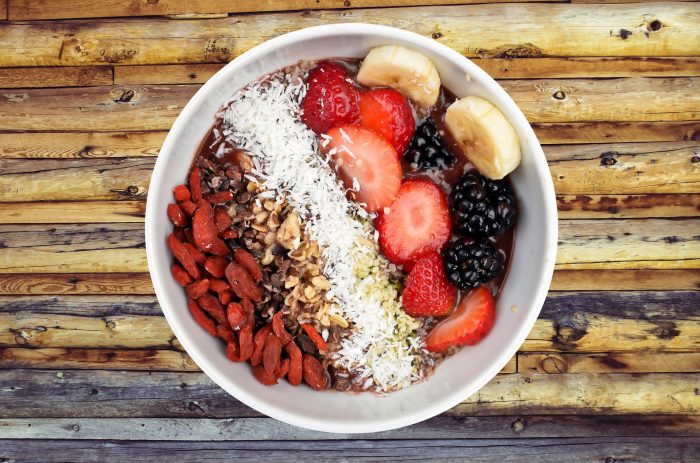Medical Compass: Fiber for the win!
The list of fiber’s health benefits is growing
By David Dunaief, M.D.

According to the most recent USDA survey data, Americans are woefully deficient in fiber, consuming between 10 and 15 grams per day. Breaking it down further into fiber subgroups, consumption levels for legumes and dark green vegetables are the lowest in comparison to suggested levels (1). This has pretty significant implications for our overall health and weight.
Still, many people worry about getting enough protein. Most of us — except perhaps professional athletes or long-distance runners — get enough protein in our diets. Protein has not prevented or helped treat diseases to the degree that studies illustrate with fiber.
So, how much fiber is enough? USDA guidelines stratify their recommendations based on gender and age. For adult women, they recommend between 22 and 28 grams per day, and for adult men, the targets are between 28 and 35 grams (1). Some argue that even these recommendations are on the low end of the scale for optimal health.
In order to increase our daily intake, several myths need to be dispelled. First, fiber does more than improve bowel movements. Also, fiber doesn’t have to be unpleasant.
The attitude has long been that to get enough fiber, one needs to eat a cardboard box. With certain sugary cereals, you may be better off eating the box, but on the whole, this is not true. Though fiber comes in supplement form, most of your daily intake should be from diet. It is actually relatively painless to get enough fiber; you just have to become aware of which foods are fiber-rich.
All fiber is not equal
Does the type of fiber make a difference? One of the complexities is that there are a number of different classifications of fiber, from soluble to viscous to fermentable. Within each of the types, there are subtypes of fiber. Not all fiber sources are equal. Some are more effective in preventing or treating certain diseases.
Take, for instance, one irritable bowel syndrome (IBS) study (2). It was a meta-analysis of 17 randomized controlled trials with results showing that soluble psyllium improved symptoms in patients significantly more than insoluble bran.
Reducing disease risk and mortality
Fiber has very powerful effects on our overall health. A very large prospective cohort study showed that fiber may increase longevity by decreasing mortality from cardiovascular disease, respiratory diseases and other infectious diseases (3). Over a nine-year period, those who ate the most fiber, in the highest quintile group, were 22 percent less likely to die than those in lowest group.
Patients who consumed the most fiber also saw a significant decrease in mortality from cardiovascular disease, respiratory diseases and infectious diseases. The authors of the study believe that it may be the anti-inflammatory and antioxidant effects of whole grains that are responsible for the positive results.
A study published in 2019 that performed systematic reviews and meta-analyses on data from 185 prospective studies and 58 clinical trials found that higher intakes of dietary fiber and whole grains provided the greatest benefits in protecting participants from cardiovascular diseases, type 2 diabetes, and colorectal and breast cancers, along with a 15-30 percent decrease in all-cause mortality for those with the highest fiber intakes, compared to those with the lowest (4).
We also see benefit with prevention of chronic obstructive pulmonary disease (COPD) with fiber in a relatively large epidemiologic analysis of the Atherosclerosis Risk in Communities study (5). The specific source of fiber was important. Fruit had the most significant effect on preventing COPD, with a 28 percent reduction in risk. Cereal fiber also had a substantial effect but not as great.
Fiber also has powerful effects on breast cancer treatment. In a study published in the American Journal of Clinical Nutrition, soluble fiber had a significant impact on breast cancer risk reduction in estrogen negative women (6). Most beneficial studies for breast cancer have shown results in estrogen receptor positive women. This is one of the few studies that has illustrated significant results in estrogen receptor negative women.
The list of chronic diseases and disorders that fiber prevents and/or treats is continually expanding.
Where is the fiber?
Foods that are high in fiber are part of a plant-rich diet. They are whole grains, fruits, vegetables, beans, legumes, nuts and seeds. Overall, beans, as a group, have the highest amount of fiber. Animal products don’t have fiber. These days, it’s easy to increase your fiber by choosing bean-based pastas. Personally, I prefer those based on lentils. Read the labels, though; you want those that are solely made from lentils without rice added.
If you have a chronic disease, the best fiber sources are most likely disease-dependent. However, if you are trying to prevent chronic diseases in general, I recommend getting fiber from a wide array of sources. Make sure to eat meals that contain substantial amounts of fiber, which has several advantages: it helps you avoid processed foods, reduces your risk of chronic disease, and increases your satiety and energy levels.
Certainly, while protein is important, each time you sit down at a meal, rather than asking how much protein is in it, you now know to ask how much fiber is in it.
References:
(1) USDA.gov. (2) Aliment Pharmacology and Therapeutics 2004;19(3):245-251. (3) Arch Intern Med. 2011;171(12):1061-1068. (4) Lancet. 2019 Feb 2;393(10170):434-445. (5) Amer J Epidemiology 2008;167(5):570-578. (6) Amer J Clinical Nutrition 2009;90(3):664–671.
Dr. David Dunaief is a speaker, author and local lifestyle medicine physician focusing on the integration of medicine, nutrition, fitness and stress management. For further information, visit www.medicalcompassmd.com.







